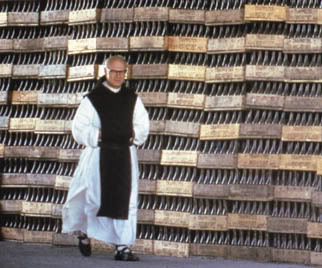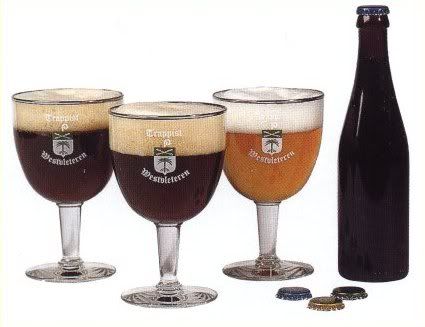 Anybody that may know me, probably is aware that I am not the biggest fan of organized religion. I`suppose that might be a little strange considering the topic for today is on the Trappists. Trappists, who are part of a Roman Catholic order abide by the very strict rules set forth by Saint Benedict who lived in the 500's AD in Italy. These philosophies and rules are intriguing as they follow an almost extreme sense of seclusion and solitude. They live a life mostly in silence, speaking only when necessary. Most of their time is spent between studying, prayer and work related activities. They are almost entirely self sufficient, as they are known to grow their own crops and live stock as well as produce many goods such as cheeses, breads etc. The ones that interest me the most are the ones that (you guessed it) brew beer!
Anybody that may know me, probably is aware that I am not the biggest fan of organized religion. I`suppose that might be a little strange considering the topic for today is on the Trappists. Trappists, who are part of a Roman Catholic order abide by the very strict rules set forth by Saint Benedict who lived in the 500's AD in Italy. These philosophies and rules are intriguing as they follow an almost extreme sense of seclusion and solitude. They live a life mostly in silence, speaking only when necessary. Most of their time is spent between studying, prayer and work related activities. They are almost entirely self sufficient, as they are known to grow their own crops and live stock as well as produce many goods such as cheeses, breads etc. The ones that interest me the most are the ones that (you guessed it) brew beer!There are Trappist monasteries all over the world, but only a total of seven official Trappist breweries left in the world. Six of them are in Belgium and there is one in Holland. There are many other “Abbey” associated breweries around, but only seven are allowed the use of the Trappist seal. The beer must be produced under direct control of the Trappist monks and within the Abbey walls. All income generated from the sales of their products are used to sustain their monasteries, pay their layman, as well as for local charities.
One misconception is that Trappist beer is a style in itself, which is of course not true. Some of them do share similarities, but most produce a sort of Dubbel, Trippel, sometimes a Single or table beer is brewed for the monks own consumption which is a lower alcohol beer. Orval, however, only makes one beer and it's style is completely different than all of the others and very distinctive. (which comes partially from a wild yeast strain called Brettanomyces, but we can save that topic for another time)
Often these beers are regarded as some of the best and most complex in the world, which to me is particularly interesting because unlike most other giant breweries, the Trappists get this reputation without the use of million dollar marketing campaigns who tell you what you should like and why. Most of these beers are designed to be aged very similar to a nice wine, which aid in creating more deeper traits. Trappist Westvleteren (the smallest of them all) even consistently gets voted best beer in the world for their Abt 12. Westvleteren is almost an oddity even for Trappist because they are without a doubt even more strict. For instance; they only brew just enough to support their needs, they only sell their beer at their monastery and only when it is available. Additionally they do not export nor permit resale of their products. Perhaps the stigma and such foreign, almost anti-capitalistic ideals fuel the desire to have this even more, but alas the monks detest the attention. They do not want to be known. They do not want to produce more as brewing beer is not their main goal but merely a side project to sustainability.
These concepts do not compute with most of western society and are almost Buddhist like in nature. Unfortunately this also creates problems as people will still try their best to get their hands on it and in turn are left to a sort of black market. I, myself had no choice but to purchase this beer from a source directly from Belgium a few years ago, but even since then is getting more scarce due to the demand, hence the price per bottle skyrocketing. Market value for one 12 ounce bottle of Westy 12 (Yellow cap) on average will cost you about 25-30 dollars.
Chimay is the biggest and perhaps most well known of them all. Nowadays you can probably find all three of their products in any stores that sell craft beer. Unlike Westvleteren, they make no such limitations on products and export their beers all over the world and still manage to create world class products. Next time I will review their offerings for you.
There is much to be said about each brewery, as they each are unique and rich in history, the technical processes in which the beer is made, etc. Even if you have just a slight interest in beer, I highly recommend Michael Jackson's Great Beers of Belgium book. So many great explanations, descriptions, stories and pictures.
-Michael Dolce


Great article Mike. There's some stuff in there that I didn't even know. I really like you're writing style a lot. Very easy to read and VERY informative. Can't wait to read some more posts of yours in the future!
ReplyDelete